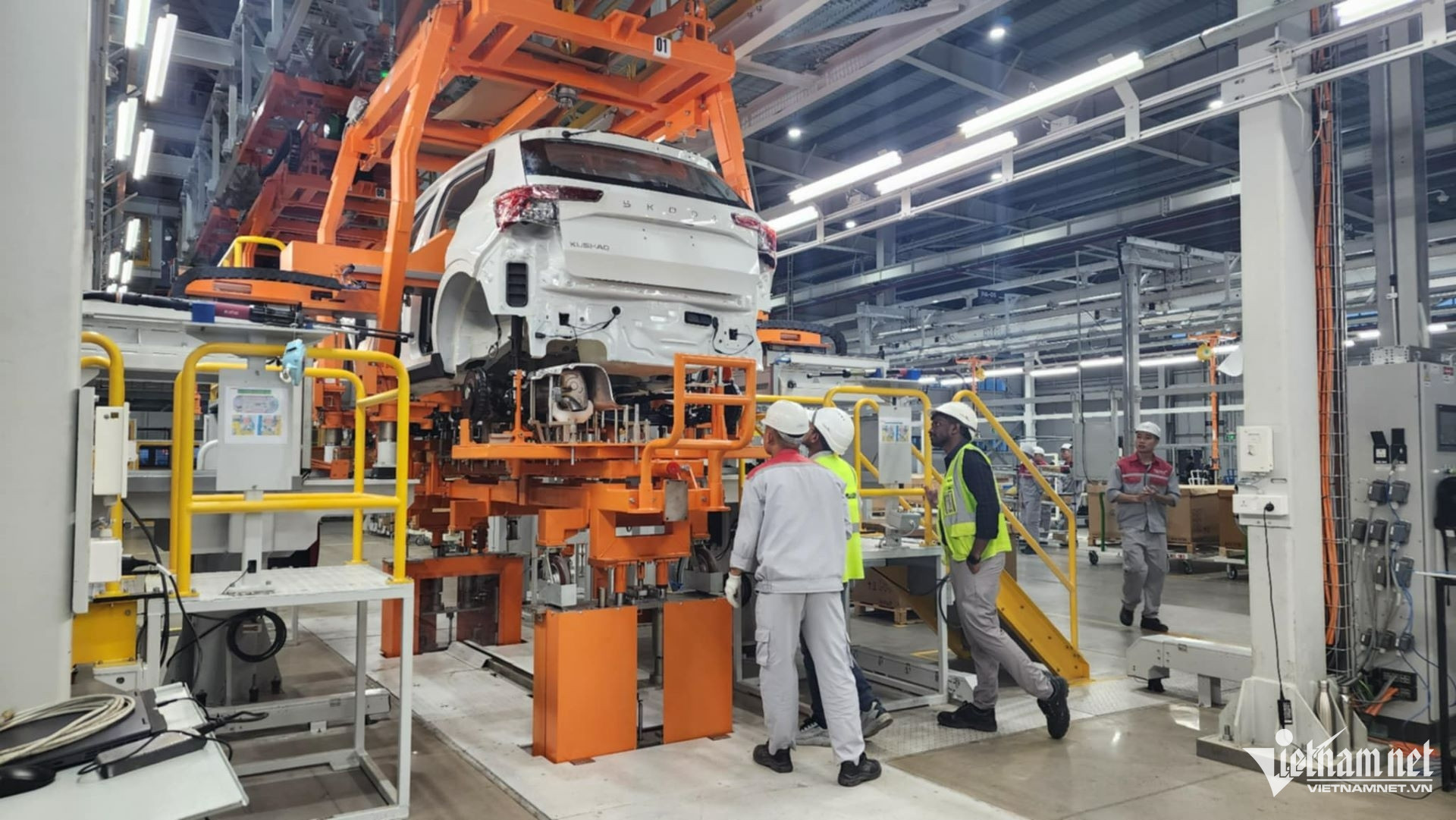If Vietnam aims to become a modern industrial nation, mastering the automotive, mechanical, and high-tech industries is essential.
A promising outlook

At the opening ceremony of the “18th Vietnam International Auto, Transport and Supporting Industries Expo 2025,” Pham Van Quan, Deputy Director of the Industry Agency (Ministry of Industry and Trade), noted “significant progress” in Vietnam’s automotive sector in terms of production, market growth, and regulatory development.
In the past five years, brands like VinFast, Thaco, Toyota, Hyundai, and Ford have not only expanded their production and market share but also made strides in localization, R&D, and technology transfer.
Toyota, for instance, has spent the last five years implementing “production improvement consulting” programs to boost the competitiveness of Vietnamese suppliers. It now sources 1,000 parts from 60 local suppliers, achieving a 43% localization rate for its Vios model.
Hyundai Thanh Cong has also grown, opening its second Ninh Binh plant in 2022 and launching a new Skoda plant in Quang Ninh in March 2025. Sources say Hyundai is actively developing a highly localized model for 2027.
Thaco, which assembles KIA, Mazda, BMW, and Peugeot vehicles, opened its Thaco Industries complex in 2022 in Chu Lai, Quang Nam. It includes an R&D center, a mechanical center, and 15 supporting factories. In 2024, Thaco exported nearly 1,200 vehicles worth $13 million, including Kia models to Thailand and Myanmar, buses to Thailand and the Philippines, and trucks to Cambodia.
Most recently, VinFast hosted a supplier localization conference inviting 1,000 domestic companies to join its global supply chain. The EV maker plans to raise its localization rate from 60% to 80% by 2026. VinFast targets 280,000 vehicles in 2025 and 1 million by 2030. In Q1 2025, it delivered 36,330 EVs globally - a 296% year-over-year increase. With factories in Hai Phong, Ha Tinh, India, and Indonesia, its annual capacity will hit 800,000 vehicles.
Phan Dang Tuat, President of the Vietnam Supporting Industry Association, reflected: “Decades ago, we hoped to learn from foreign carmakers. Now, we are witnessing genuine progress in building a strong domestic automotive industry.”
Building an automotive ecosystem together

Dao Cong Quyet, Head of the Communications Subcommittee of the Vietnam Automobile Manufacturers Association (VAMA), emphasized that Vietnam has entered the motorization phase. In 2024, VAMA members produced 386,000 vehicles (80% of the market), generating $15 billion in revenue - 3% of GDP - and contributing $8 billion in taxes. In the first five months of 2025, sales reached 131,044 vehicles, up 21% year-over-year.
EVs are growing rapidly: VinFast sold 35,000 electric cars in 2023 and 80,000 in 2024. Hybrid sales grew from 3,800 in 2023 to over 10,000 in 2024, mirroring global trends.
Yet Vietnam still lags in vehicle ownership: only 65 cars per 1,000 people, compared to Brunei (740), Thailand (280), and Malaysia (542). “The growth potential is enormous. As the market expands, so will the supporting industries,” Quyet observed.
However, Deputy Director Pham Van Quan acknowledged that localization remains low, with key components still reliant on imports. The supporting industry is fragmented, with limited global integration.
To unlock transformative growth, Quan stressed collaboration between the government and businesses. Automakers and suppliers must partner with universities to develop R&D centers, propose ideas to the Ministry of Industry and Trade, and help build a legal framework - especially for electric vehicles, AI, robotics, and next-gen parts.
“The auto-mechanical industry isn’t just about production - it symbolizes national strength and technological advancement. If Vietnam wants to become a developed industrial country, mastering automotive, mechanical, and high-tech sectors is non-negotiable,” he stated.
The Ministry is revising Decree 111/2015/NĐ-CP to offer better tax, land, and credit incentives for domestic parts production. It is also finalizing a National Plan for Auto-Mechanical Industry Development through 2035, including technical centers in the North, Central, and South to support R&D and local manufacturing.
A national automotive industry strategy to 2030, with a vision to 2045, is also in the works, promising high growth targets - and significant challenges - for Vietnam’s industry players.
Pham Huyen